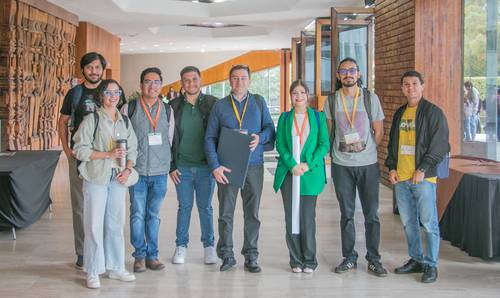Laurent Loinard, a researcher at the National Autonomous University of Mexico’s Institute of Radio Astronomy and Astrophysics (IRyA), specializes in studying stars, black holes, and the interstellar medium. He believes that observing celestial bodies is essential to gaining a better understanding of the universe we live in. Loinard emphasizes that basic science can lead to applied science in the future, potentially improving people’s lives.
Recently, Loinard was selected as the Robert F. Kennedy Visiting Professor at Harvard University. In this role, he will teach students and collaborate with colleagues on the Event Horizon Telescope (EHT) project. Loinard expressed gratitude for this opportunity to teach astrophysics at Harvard and work on cutting-edge research.
Loinard uses radio-interferometry to study young stars with high precision by observing their movement and distances using electromagnetic radiation from multiple telescopes, creating sharp images. He was part of the EHT team that captured the first image of a black hole in 2019. Collaborating on the EHT project, Loinard explained how capturing images of black holes aligns with theoretical models of the universe. He also discussed plans to expand the EHT to the Next Generation Event Horizon Telescope (ngEHT), which will include telescopes in various locations, including one in Baja California, Mexico.
Through his research and collaborations, Loinard aims to deepen our understanding of the universe while emphasizing the importance of basic science evolving into practical applications. He cited examples like Einstein’s theory of relativity and quantum mechanics as integral to modern technology. His work exemplifies how scientific inquiry can constantly interplay with real-world benefits.
Loinard’s expertise will undoubtedly be valuable as he continues his work on expanding our understanding of black holes through imaging technology and teaching students about astrophysics at Harvard University.


